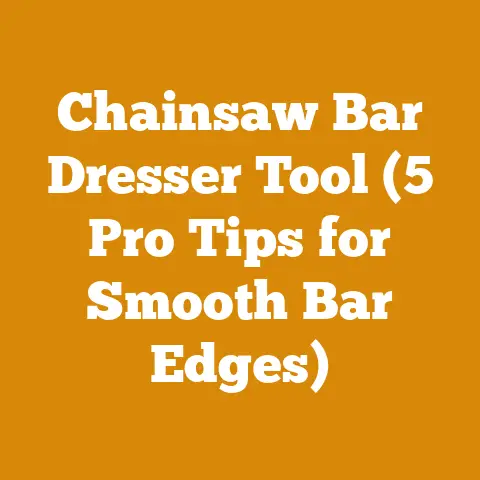Clamp On Forks for Loader Bucket Review (Must-Know Wood Handling Tips)
Layering. It’s a word that evokes images of warm clothes on a cold day, a strategy for defense against the elements. But layering also applies to wood handling, particularly when you’re dealing with logs and firewood. Think of it as building a solid foundation for efficiency and safety. In this guide, I’ll be diving deep into the world of clamp-on forks for loader buckets, sharing my experiences, and providing the must-know wood handling tips that I’ve learned over the years. From choosing the right forks to mastering essential techniques, I’ll equip you with the knowledge to make the most of this versatile tool.
Understanding Clamp-On Forks: The Basics
Clamp-on forks attach directly to your loader bucket, transforming it into a powerful lifting and moving tool. They are a cost-effective alternative to dedicated forklifts or log grapples, especially for hobbyists, small-scale loggers, and firewood producers.
- What are they? Metal forks that attach to a loader bucket, secured by clamps and often chains.
- What are they used for? Primarily lifting and moving logs, timber, pallets of firewood, and other bulky materials.
- Who are they for? Homeowners, small-scale logging operations, firewood businesses, farmers, and anyone needing to move heavy objects with a loader.
My Experience: I started with a basic set of clamp-on forks from a local farm supply store. They were adequate for small logs, but quickly proved insufficient for larger diameters. This led me to research different types and understand the importance of load capacity and material strength.
Types of Clamp-On Forks
Clamp-on forks aren’t a one-size-fits-all solution. Different designs cater to varying needs and loader sizes.
- Standard Clamp-On Forks: These are the most common type, featuring two forks that clamp onto the top edge of the bucket.
- Pros: Affordable, easy to install, versatile for various tasks.
- Cons: Limited load capacity compared to heavier-duty models, potential for slippage on uneven terrain.
- Heavy-Duty Clamp-On Forks: Constructed with thicker steel and reinforced clamps, these forks are designed for heavier loads and more demanding applications.
- Pros: Higher load capacity, increased stability, durable construction.
- Cons: More expensive than standard models, may require a larger loader.
- Log Grapple Forks: These forks feature a hydraulic grapple that clamps down on the log, providing superior control and stability.
- Pros: Excellent log control, ideal for handling large or irregularly shaped logs, reduced risk of slippage.
- Cons: Significantly more expensive than standard or heavy-duty forks, requires a hydraulic connection on the loader.
Technical Specification Example:
| Fork Type | Load Capacity (lbs) | Fork Length (inches) | Steel Grade | Clamp Type | Recommended Loader Size (HP) |
|---|---|---|---|---|---|
| Standard Clamp-On | 2,000 | 42 | A36 | Bolt-On | 25-50 |
| Heavy-Duty Clamp-On | 4,000 | 48 | A572 Grade 50 | Weld-On/Bolt-On | 40-75 |
| Log Grapple Forks | 3,000 | 48 | A572 Grade 50 | Hydraulic | 50+ |
Key Considerations When Choosing Clamp-On Forks
Selecting the right clamp-on forks is crucial for safety and efficiency. Here are the key factors to consider:
- Load Capacity: This is the most critical factor. Always choose forks with a load capacity that exceeds the weight of the heaviest logs you plan to handle. Overloading forks can lead to catastrophic failure and serious injury.
- Data Point: A study by the American Society of Agricultural and Biological Engineers (ASABE) found that 70% of loader-related accidents involved exceeding the rated load capacity of the equipment.
- Fork Length: The length of the forks determines the size of logs you can safely handle. Longer forks provide better support and stability for larger logs.
- Rule of Thumb: Choose fork lengths that are at least half the length of the logs you typically handle.
- Clamp Mechanism: The clamp mechanism should be robust and secure, preventing the forks from slipping or shifting during operation.
- Best Practice: Regularly inspect the clamps for wear and tear, and tighten them before each use.
- Steel Grade: Opt for forks made from high-strength steel, such as A36 or A572 Grade 50. These steels offer excellent durability and resistance to bending or breaking.
- Material Specification: A36 steel has a minimum yield strength of 36,000 psi, while A572 Grade 50 has a minimum yield strength of 50,000 psi.
- Bucket Compatibility: Ensure the forks are compatible with your loader bucket’s dimensions and design. Measure the bucket’s width and height to ensure a proper fit.
- Practical Tip: Some manufacturers offer adjustable clamp mechanisms to accommodate different bucket sizes.
- Safety Features: Look for forks with safety features such as chain binders, load chains, and safety pins. These features provide added security and prevent accidents.
My Story: I once underestimated the weight of a green oak log. The forks I was using, although seemingly sturdy, began to bend under the strain. Luckily, I noticed the deformation before a complete failure and was able to safely lower the log. This experience taught me a valuable lesson about the importance of knowing the weight of the wood and selecting forks with an adequate safety margin.
Essential Wood Handling Tips: Mastering the Techniques
Having the right equipment is only half the battle. Mastering the techniques for safe and efficient wood handling is equally important.
- Log Weight Estimation: Accurately estimating log weight is crucial for preventing overloading and ensuring safe operation.
- Formula: Weight (lbs) = (π * (Diameter/2)^2 * Length * Wood Density) / 144
- Diameter: Log diameter in inches
- Length: Log length in feet
- Wood Density: Varies depending on the species and moisture content (refer to a wood density chart)
- Example: A 12-inch diameter oak log, 8 feet long, with a moisture content of 20%, has a density of approximately 55 lbs/cubic foot. Using the formula, the estimated weight is approximately 345 lbs.
- Formula: Weight (lbs) = (π * (Diameter/2)^2 * Length * Wood Density) / 144
- Safe Lifting Practices: Follow these guidelines for safe lifting:
- Position the forks under the log’s center of gravity.
- Lift the log slowly and smoothly, avoiding sudden movements.
- Keep the load as low as possible to maintain stability.
- Avoid lifting logs over people or obstacles.
- Never exceed the rated load capacity of the forks or the loader.
- Log Stacking Techniques: Proper log stacking is essential for safe storage and efficient drying.
- Criss-Cross Stacking: This method provides good air circulation and stability.
- Parallel Stacking: This method is suitable for long logs and requires a solid base.
- Key Considerations:
- Stack logs on a level surface.
- Leave space between logs for air circulation.
- Avoid stacking logs too high, which can create instability.
- Firewood Preparation: Clamp-on forks can significantly streamline the firewood preparation process.
- Moving Logs to the Splitting Area: Use the forks to transport logs from the storage area to the wood splitter.
- Stacking Split Wood: Stack split wood on pallets or in racks using the forks, reducing manual labor.
- Drying and Seasoning: Proper drying and seasoning are crucial for producing high-quality firewood.
- Target Moisture Content: Aim for a moisture content of 20% or less.
- Drying Time: Typically takes 6-12 months, depending on the species and climate.
- Working with Pallets: These forks can also be used to move pallets of firewood or other materials.
- Pallet Selection: Choose pallets that are in good condition and can support the weight of the load.
- Load Distribution: Distribute the load evenly on the pallet to prevent tipping or collapse.
Case Study: Streamlining a Small Firewood Business
I consulted with a small firewood business owner who was struggling with manual labor and inefficient processes. By implementing clamp-on forks and optimizing their workflow, they were able to:
- Reduce labor costs by 40%.
- Increase production by 30%.
- Improve safety by minimizing manual lifting.
The key was to strategically use the forks for every stage of the process, from moving logs to stacking split wood. This transformation demonstrated the profound impact that the right equipment and techniques can have on a small business.
Safety First: Mitigating Risks
Wood handling can be hazardous, and safety should always be your top priority.
- Personal Protective Equipment (PPE): Always wear appropriate PPE, including:
- Safety Glasses: Protect your eyes from flying debris.
- Hearing Protection: Reduce the risk of hearing damage from loud machinery.
- Gloves: Protect your hands from cuts and abrasions.
- Steel-Toed Boots: Protect your feet from heavy objects.
- Hard Hat: Protect your head from falling logs or branches.
- Loader Safety: Follow these safety guidelines when operating a loader with clamp-on forks:
- Read the Operator’s Manual: Familiarize yourself with the loader’s controls and safety features.
- Inspect the Loader: Check for any mechanical problems before each use.
- Maintain a Safe Distance: Keep bystanders away from the work area.
- Operate on Level Ground: Avoid operating on steep slopes or uneven terrain.
- Lower the Load Before Transporting: Keep the load as low as possible to maintain stability.
- Emergency Preparedness: Be prepared for emergencies by:
- Having a First-Aid Kit on Hand: Ensure the kit is well-stocked and easily accessible.
- Knowing Emergency Contact Information: Keep a list of emergency phone numbers readily available.
- Having a Communication System: Use a two-way radio or cell phone to communicate with others.
- OSHA Standards: Familiarize yourself with relevant OSHA standards for logging and wood processing.
- Regulation Example: OSHA 1910.266 covers logging operations and includes requirements for machine guarding, personal protective equipment, and safe operating procedures.
Data Point: According to the National Institute for Occupational Safety and Health (NIOSH), logging is one of the most dangerous occupations in the United States, with a fatality rate significantly higher than the national average.
Maintenance and Care: Ensuring Longevity
Proper maintenance and care are essential for extending the life of your clamp-on forks and ensuring safe operation.
- Regular Inspections: Inspect the forks regularly for signs of wear and tear, such as cracks, bends, or corrosion.
- Frequency: Inspect before each use and after any heavy use.
- Cleaning and Lubrication: Clean the forks regularly to remove dirt, debris, and grime. Lubricate moving parts, such as the clamp mechanism, to prevent corrosion and ensure smooth operation.
- Lubricant Recommendation: Use a high-quality grease specifically designed for outdoor equipment.
- Tightening Clamps: Check the clamp tightness regularly and tighten them as needed. Loose clamps can cause the forks to slip or shift, creating a safety hazard.
- Torque Specification: Refer to the manufacturer’s recommendations for the proper torque specification.
- Storage: Store the forks in a dry, sheltered location when not in use. This will protect them from the elements and prevent corrosion.
- Welding Repairs: If you notice any cracks or bends in the forks, have them professionally repaired by a qualified welder. Do not attempt to repair them yourself unless you have the necessary skills and equipment.
My Insight: I learned the hard way about the importance of regular maintenance. I neglected to properly lubricate the clamp mechanism on my forks, and eventually, it seized up, rendering the forks unusable. This costly mistake taught me the value of preventative maintenance.
Advanced Techniques: Maximizing Efficiency
Once you’ve mastered the basics, you can explore advanced techniques to further maximize efficiency and productivity.
- Using Multiple Loaders: If you have access to multiple loaders, you can coordinate their efforts to move logs more quickly and efficiently.
- Example: One loader can be used to load logs onto a trailer, while another loader can be used to unload the trailer at the processing area.
- Integrating with Other Equipment: Combine clamp-on forks with other equipment, such as log splitters, firewood processors, and conveyors, to create a streamlined wood processing system.
- Custom Modifications: Consider custom modifications to your forks to better suit your specific needs.
- Example: Adding a backrest to the forks can prevent logs from rolling off the back.
- Caution: Always consult with a qualified engineer before making any modifications to ensure they are safe and structurally sound.
- GPS Tracking: For larger logging operations, GPS tracking can be used to monitor the location of logs and equipment, improving efficiency and reducing the risk of theft.
Troubleshooting Common Problems
Even with the best equipment and techniques, you may encounter problems from time to time. Here are some common issues and how to troubleshoot them:
- Forks Slipping on the Bucket:
- Cause: Loose clamps, worn clamp pads, or an incompatible bucket design.
- Solution: Tighten the clamps, replace the clamp pads, or use shims to improve the fit.
- Forks Bending Under Load:
- Cause: Overloading the forks, using forks that are not strong enough for the job, or a manufacturing defect.
- Solution: Reduce the load, upgrade to heavier-duty forks, or contact the manufacturer.
- Hydraulic Issues (for Log Grapple Forks):
- Cause: Leaks, low hydraulic pressure, or a malfunctioning valve.
- Solution: Inspect the hydraulic lines and fittings for leaks, check the hydraulic fluid level, or consult a qualified mechanic.
- Difficulty Lifting Logs:
- Cause: Insufficient loader power, improper lifting technique, or a log that is too heavy.
- Solution: Use a larger loader, improve your lifting technique, or split the log into smaller pieces.
The Future of Wood Handling: Innovation and Technology
The field of wood handling is constantly evolving, with new technologies and innovations emerging all the time. Some of the trends to watch include:
- Electric Loaders: Electric loaders are becoming increasingly popular due to their lower emissions and quieter operation.
- Autonomous Loaders: Autonomous loaders are being developed to automate the wood handling process, reducing labor costs and improving safety.
- Smart Logging Systems: Smart logging systems use sensors and data analytics to optimize the harvesting and processing of timber.
- Sustainable Forestry Practices: There is a growing emphasis on sustainable forestry practices, which aim to protect forests and ensure their long-term health.
My Prediction: I believe that technology will play an increasingly important role in wood handling in the years to come. We will see more automation, more data-driven decision-making, and a greater focus on sustainability.
Conclusion: Mastering Wood Handling with Clamp-On Forks
Clamp-on forks for loader buckets are a versatile and cost-effective tool for anyone involved in wood handling. By understanding their capabilities, limitations, and the best practices for their use, you can significantly improve your efficiency, safety, and productivity. Remember to prioritize safety, maintain your equipment, and continuously learn and adapt to new technologies and techniques. With the right knowledge and tools, you can conquer the challenges of wood handling and achieve your goals. From personal experience, I have seen how these tools can transform operations, making them smoother, safer, and ultimately, more successful. It’s not just about moving wood; it’s about moving your business forward.






